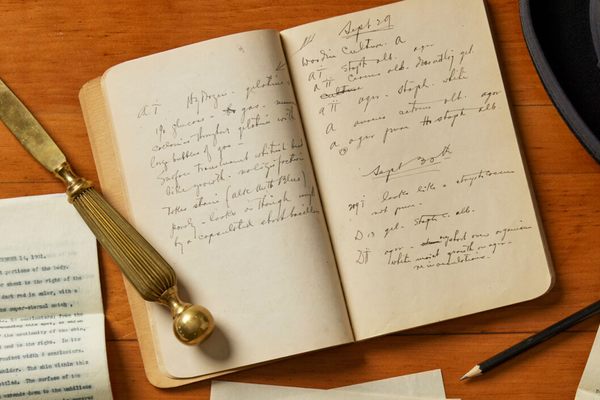The 1922 Poem That Linked the Russian Revolution to Cryonics
One group of anarchist artists planned on being around a long, long time.

Much of life in post-World War I Russia was pretty much what you’d expect it to be: bleak. The country had suffered unimaginable losses during the war, with estimates of those killed in combat* climbing as high as 1.8 million. Death hung in the air.
But hanging there right alongside it was something else—revolution. A growing number of Russians wanted to remake their world, even though they knew, perhaps better than anyone, that it would be a long and hard process. If the war had taught Russians anything, it was that life is finite and fleeting. But what if there was a way to live forever? To stop time? Stop the world from spinning while it’s remade into something better? It was in this spirit that, in the aftermath of the war, a small group of writers, artists, and anarchists published a 14-page poem about cryonics, a fledgling theory mixing science and mysticism that advocated for the ultimate revolutionary tool: immortality.
This group, who called themselves the Biocosmists-Immortalists, felt that humans had two basic rights: the right to exist, and the right of free movement—and that these rights came with no expiration date. The group proclaimed in their 1922 manifesto, Izvestiia, that “immortality, resurrection, and rejuvenation” weren’t just ideas, they were the basis of their new movement. Death was just a roadblock on the road to revolution.

According to the researcher Nikolai Krementsov, author of Revolutionary Experiments: The Quest for Immortality in Bolshevik Science, the Biocosmists-Immortalists believed in abolishing death because it was “logically absurd, ethically impermissible, and aesthetically ugly.” Living while death surrounded you was the ultimate act of resistance. Living forever while others died? Well, that was a revolution.
Later that year, the group’s leader, the poet Alexander Iaroslavskii, published “Poem of Anabiosis,” a 14-page polemic explaining exactly what the Biocosmists-Immortalists had in mind. They would freeze the planet in a state of suspended animation, while they, the “biologist, poet, worker[s]” of the world, got to work remaking the planet:
Between Life and Death
Will ram a heavy wedge, A third door opens,
For the world, anabiosis.
[…]
And when all the work is done
And, when as a perfect toy, Earth—
Wake up, the living, again
They based their manifesto on the theories of the Russian scientist Profirii Bakhmet’ev, whose experiments with freezing insects and small mammals made the science seem tantalizingly possible. With the “chemist, and physicist, engineer, architect, and poet […] bacteriologist and biologist,” Iaroslavskii wrote, he and his group would not only fix their dismal post-war conditions through immortality, they would raise the lost city of Atlantis, control the weather, eliminate diseases, and revive the great thinkers of the past, including Shakespeare and Socrates. They’d remake the world one day at a time, one year at a time, forever.

“The Poem of Anabiosis” is, according to Krementsov, “one of the first literary renderings of anabiosis,” but it certainly wouldn’t be the last. Countless dreamers have played with the idea of pressing the pause button on life. The idea of an icy half-death has found its way into popular imagination well past Iaroslavskii’s time and into our own, including a 1931 science-fiction story that influenced Robert Ettinger, the so-called “Father of Cryonics.” But it was a poem-as-revolutionary-manifesto from a Russian anarchist that gave us one of the 20th century’s earliest chances to ponder the potential of cryonics.
*Update: This article has been updated since it was first published to clarify the number of World War I Russian casualties originally cited in the article refer to combat deaths only.























Follow us on Twitter to get the latest on the world's hidden wonders.
Like us on Facebook to get the latest on the world's hidden wonders.
Follow us on Twitter Like us on Facebook